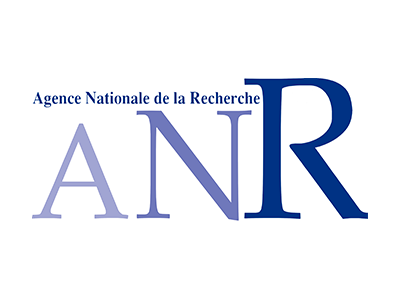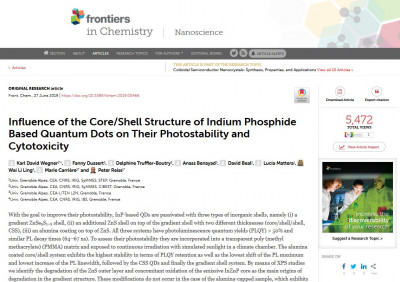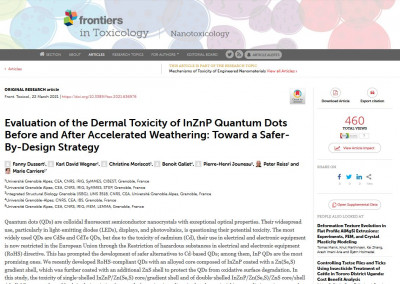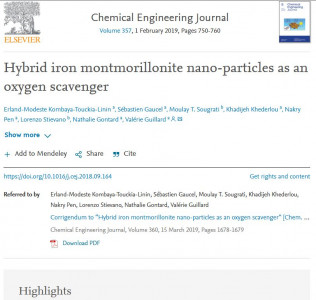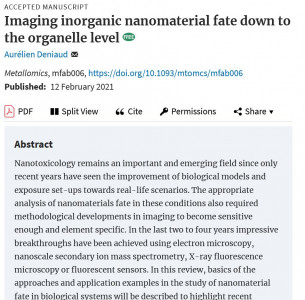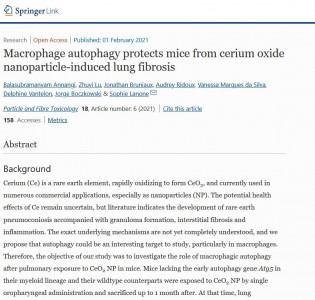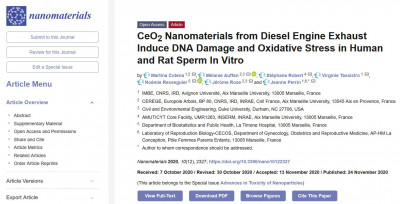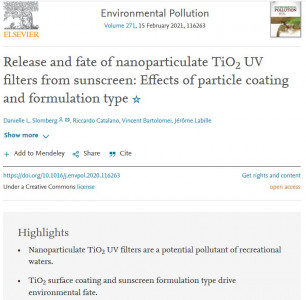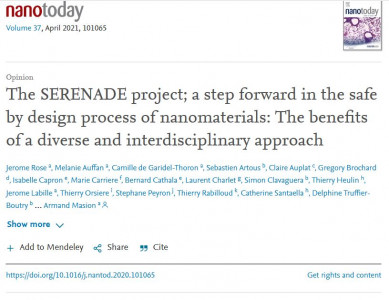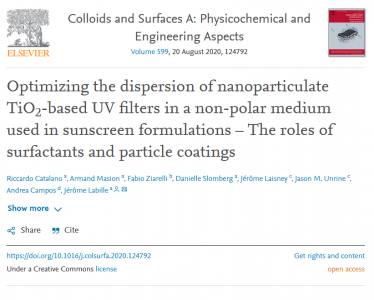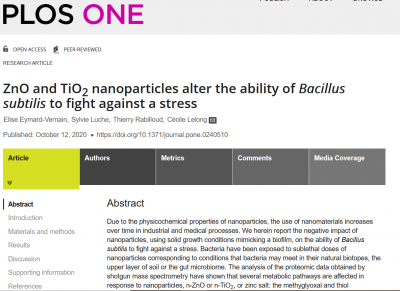With the goal to improve their photostability, InP-based QDs are passivated with three types of inorganic shells, namely (i) a gradient ZnSexS1−x shell, (ii) an additional ZnS shell on top of the gradient shell with two different thicknesses (core/shell/shell, CSS), (iii) an alumina coating on top of ZnS.
Read More
Quantum dots (QDs) are colloidal fluorescent semiconductor nanocrystals with exceptional optical properties. Their widespread use, particularly in light-emitting diodes (LEDs), displays, and photovoltaics, is questioning their potential toxicity.
Read More
Iron nanoparticles supported on montmorillonite (MMT-Fe) were synthesized via the reduction by sodium borohydride of iron salts dissolved in a suspension of MMT.
Read More
Nanotoxicology remains an important and emerging field since only recent years have seen the improvement of biological models and exposure set-ups towards real-life scenarios.
Read More
Cerium (Ce) is a rare earth element, rapidly oxidizing to form CeO2, and currently used in numerous commercial applications, especially as nanoparticles (NP). The potential health effects of Ce remain uncertain, but literature indicates the development of rare earth pneumoconiosis accompanied with granuloma formation, interstitial fibrosis and inflammation.
Read More
Cerium dioxide nanomaterials (CeO2 NMs) are widely used in nano-based diesel additives to decrease the emission of toxic compounds, but they have been shown to increase the emission of ultrafine particles as well as the amount of released Ce. The Organization for Economic Cooperation and Development included CeO2 NMs in the priority list of nanomaterials that require urgent evaluation...
Read More
Nanoparticulate mineral UV filters, such as titanium dioxide (TiO2) nanocomposites, are being increasingly used in sunscreens as an alternative to organic UV filters. However, there is still a lack of understanding regarding their fate and behavior in aquatic environments and potential environmental impacts after being released from a bather’s skin during recreational activities.
Read More
Developing safe nanomaterials has become a major concern in all the industry sectors using advanced materials. However, there are very few initiatives addressing this issue. The SERENADE project, with its long-term funding scheme, provided a unique opportunity to foster a coordinated, yet diverse approach to investigate the safe-by-design development of nanomaterials in a variety of application fields, using a targeted set of inter-disciplinary case studies.
Read More
Manufactured TiO2 nanoparticles are widely used in cosmetics as UV blockers. The environmental risk associated with these Engineered Nanomaterials (ENMs) strongly depends on their concentration, aggregation state and surface chemistry. Controlling these parameters in the sunscreen formulation is crucial in order to optimize the ENMs content and better understand their fate, transport, and toxicity at the product’s end-of-life.
Read More
Due to the physicochemical properties of nanoparticles, the use of nanomaterials increases over time in industrial and medical processes. We herein report the negative impact of nanoparticles, using solid growth conditions mimicking a biofilm, on the ability of Bacillus subtilis to fight against a stress.
Read More





